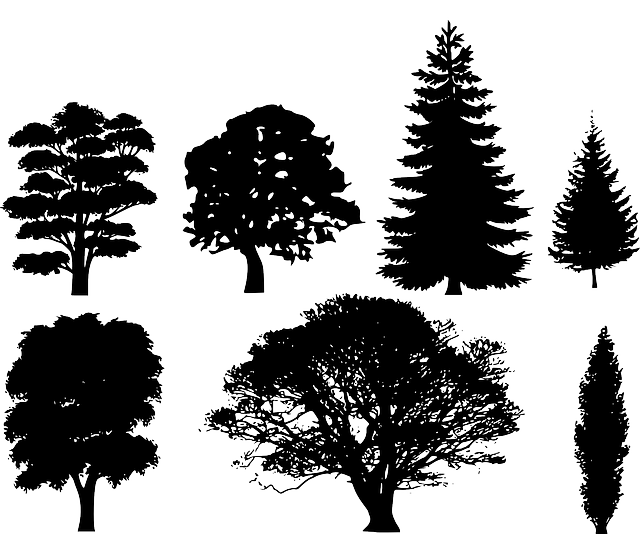Dead tree removal is crucial for maintaining safe public spaces in urban areas like Plano, Texas. Regular inspections by professionals identify trees needing removal due to disease, infestation, or structural weaknesses. Proactive management enhances neighborhood aesthetics and prevents crises. Effective removal practices ensure hazardous trees are safely taken down, fostering a safer urban environment. Identifying tree distress signs early, navigating permits, choosing certified arborists with modern equipment, and following sustainable practices are key for responsible Tree Removal Plano TX. Common high-risk species include oak, maple, and ash trees.
In the vibrant city of Plano, Texas, maintaining a healthy urban landscape is essential. Dead tree extraction is often necessary for safety, aesthetic appeal, and environmental reasons. This comprehensive guide explores when and why dead tree removal is crucial in Plano, navigating the permitting process, choosing the right professionals, and understanding common tree types requiring attention. From environmental impact to best practices, discover the key aspects of responsible tree removal in Plano, TX.
- Understanding Dead Tree Removal: When and Why It's Necessary in Plano, TX
- Identifying Signs Your Tree Needs Removal: A Comprehensive Guide
- The Permitting Process for Tree Removal in Plano, Texas
- Choosing the Right Tree Removal Company: Key Factors to Consider
- Common Types of Trees That Require Removal in Plano, TX
- Environmental Impact and Best Practices for Responsible Tree Removal
Understanding Dead Tree Removal: When and Why It's Necessary in Plano, TX

In many urban environments, including Plano, TX, dead tree removal is a crucial aspect of maintaining safe and healthy public spaces. Dead trees, while visually unappealing, can pose significant risks to surrounding structures and individuals. Over time, dead wood becomes brittle and vulnerable to strong winds or storms, increasing the likelihood of falling branches. This not only causes property damage but also creates potential hazards for pedestrians and nearby homes. Therefore, understanding when and why dead tree removal is necessary is essential for homeowners and local authorities alike in Tree Removal Plano TX.
Regular inspections are key to identifying trees that require removal. Professionals skilled in Tree Removal Plano TX should be engaged to assess the health of trees, taking into account factors like disease, insect infestation, or structural weaknesses. Proactive management of dead trees not only enhances the aesthetics of neighborhoods but also prevents potential crises. It’s particularly important for older trees that may have outlived their natural lifespan and could pose greater risks. Effective removal practices ensure that these hazardous trees are safely taken down, promoting a safer and more vibrant urban environment in Plano, TX.
Identifying Signs Your Tree Needs Removal: A Comprehensive Guide

If your tree in Plano, TX is showing signs of distress or potential danger, it’s crucial to identify them early on. This proactive approach ensures both your safety and prevents damage to nearby structures. Look out for branches that appear dead, diseased, or broken. If you notice any rot, bark peeling, or abnormal growths, these could indicate a health issue. Additionally, trees with heavy lean or those located near power lines are significant concerns. Regular inspections can help in determining the best course of action—whether it’s tree pruning, treatment, or ultimately, safe removal by professionals specializing in Tree Removal Plano TX.
When considering tree removal, understanding these signs is key. Dead or diseased trees can pose structural risks and create safety hazards. In urban areas like Plano, TX, where trees often share spaces with homes, power lines, and other structures, prompt action is necessary. Trusting experts for accurate assessments ensures that you’re making informed decisions about your property’s health and safety.
The Permitting Process for Tree Removal in Plano, Texas

In Plano, Texas, initiating a dead tree extraction project involves a structured permitting process to ensure compliance with local regulations and safety standards. Homeowners or property managers planning Tree Removal Plano TX must familiarize themselves with the necessary permits and applications required by the city. The initial step entails submitting an application to the appropriate municipal department, typically detailing the scope of work, location of the tree(s) to be removed, and reasons for removal. This process is designed to assess potential environmental impacts and ensure the safety of nearby structures and residents.
Once the application is approved, applicants may obtain the required permits, which outline specific guidelines and requirements for the tree removal process. These permits often specify timeframes, worker qualifications, and methods for disposal or recycling of removed trees. Adhering to these regulations is crucial to avoid penalties and ensure a smooth execution of the Tree Removal Plano TX project, promoting a safe and compliant environment.
Choosing the Right Tree Removal Company: Key Factors to Consider

When considering tree removal in Plano TX, choosing the right company is paramount for a safe and successful project. Key factors to consider include expertise, equipment, and environmental responsibility. Look for a company with certified arborists who specialize in tree removal, as they understand the unique needs of different tree species and can minimize damage to your property.
Additionally, ensure the company uses modern equipment designed for efficient and safe tree extraction. Proper tools and techniques are crucial for preventing damage to surrounding structures and ensuring the safety of your family and pets. Furthermore, a reputable company will prioritize environmental conservation, properly disposing of debris and following best practices for land clearance.
Common Types of Trees That Require Removal in Plano, TX

In Plano, TX, several common tree species often require careful removal due to their size, age, or health conditions. Among these are oak trees, known for their strength and longevity but can become hazardous if diseased or structurally unsound. Maple trees, with their vibrant fall foliage, might also need to be removed if they’re blocking power lines or causing structural issues to nearby buildings. Another common candidate for removal is the ash tree, which has been significantly impacted by emerald ash borer infestations in recent years.
Additionally, older maple, birch, and even some pine trees can develop root systems that interfere with sewer lines, water mains, or concrete structures, making them candidates for professional Tree Removal Plano TX services. Landscapers and arborists play a crucial role in safely removing these trees to prevent damage to properties and ensure the health of other surrounding vegetation.
Environmental Impact and Best Practices for Responsible Tree Removal

When undertaking tree removal in Plano, TX, it’s crucial to consider the environmental impact and adhere to best practices for responsible tree care. Before cutting down a dead or diseased tree, explore options like structural pruning and targeted treatments that can extend its life and promote healthy growth in surrounding ecosystems. These practices not only preserve biodiversity but also mitigate risks associated with fallen trees, such as property damage and safety hazards.
In Plano, TX, tree removal should be a last resort. Professionals should always assess the situation to determine if proper maintenance and care can restore the tree’s health. When removal is necessary, it’s essential to follow sustainable practices like recycling wood for mulch or repurposing materials, minimizing soil disturbance, and replanting native species to maintain the balance of local flora and fauna.
When considering tree removal in Plano, TX, it’s evident that a well-planned and responsible approach is essential. From understanding the necessity of dead tree extraction to choosing the right company and navigating environmental considerations, this guide has equipped you with valuable insights. Whether dealing with diseased trees or those posing safety risks, knowing the permitting process and common tree types requiring removal empowers homeowners to make informed decisions. By prioritizing responsible practices, Plano residents can ensure a balanced approach to tree management, enhancing both their properties’ aesthetics and the local environment’s health.






